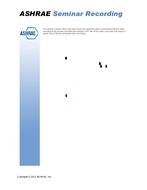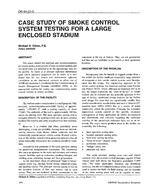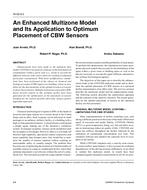Click here to purchase
Single-fan blower door testing is commonly used for estimating the airtightness of multi-unit residential building (MURB) suites, but current testing procedures and standards do not take into consideration the impact that adjacent zone pressures may have on test results. In two case study buildings, standard whole-suite airtightness tests were conducted with the adjacent zone pressures in two conditions. The first condition had the adjacent zones at the same pressure as the atmospheric pressure, which was achieved by leaving the windows opened in these zones and monitoring interior pressures. The second condition allowed the adjacent zone pressures to reach a natural equilibrium with the test suite, while the windows were closed, resulting in interior pressures between atmospheric and the test suite pressure. The results of the tests showed that, in Building 1, air leakage at 50 Pascals (Q50) was changed by approximately 24% depending on the adjacent suite pressures, while the results from Building 2 showed no appreciable change in Q50. This higher percentage difference in Building 1 may be due to the higher interconnectedness between the suites, as compared to Building 2. Despite a small sample size of two suites, the effect of adjacent zone pressure appears to be highly variable and will likely change on a building-to-building basis. These tests highlight the importance of monitoring adjacent zone pressures during whole-suite airtightness tests in MURBs to ensure they are as close as possible to atmospheric pressure such that the test results can be more accurately interpreted.
Citation: Thermal Buildings XIV 2019
Product Details
- Published:
- 2019
- Number of Pages:
- 8
- Units of Measure:
- Dual
- File Size:
- 1 file , 2.2 MB
- Product Code(s):
- D-Bldgs19-025


